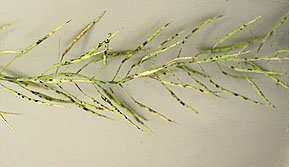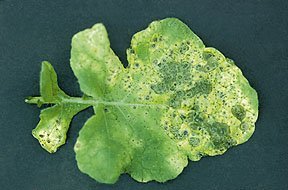Black Spot In Canola
Black spot is common at low levels but is usually not a serious disease. However in some years it can cause severe losses due to shrunken seeds or premature pod splitting.


Host Crops
Canola and mustard
Biology
Black spot overwinters on infected crop residue and seeds. In the spring, the spores germinate, penetrate plant tissue, and cause lesions, usually within a few days. Warm, humid conditions favour the disease. The lesions develop and produce wind-borne spores which may cause more infection on neighbouring canola or mustard. The cycle continues throughout the season. Lesions on the pods may infect seeds.
Symptoms Of Damage
Small, round spots on the pods and stems, that are initially brown to black, become black to grey, with a black border. Severe leaf spotting causes the leaves to die and drop off. Infected pods become dry and shrunken and split prematurely.
Scouting Techniques
Look for small, round, brown to black spots on the stems and pods.
Control Tips
- Use disease-free seed and a seed treatment. Follow a 3-year crop rotation with any crop except canola or mustard.
- Early swathing of an infected crop may prevent serious shrinkage or shattering losses.
- Yellow, brown and oriental mustard and Argentine canola are more resistant than Polish canola.
- Control volunteer canola and cruciferous weeds like wild mustard in subsequent years to reduce inoculum levels.
For further information, contact your GO representative.

